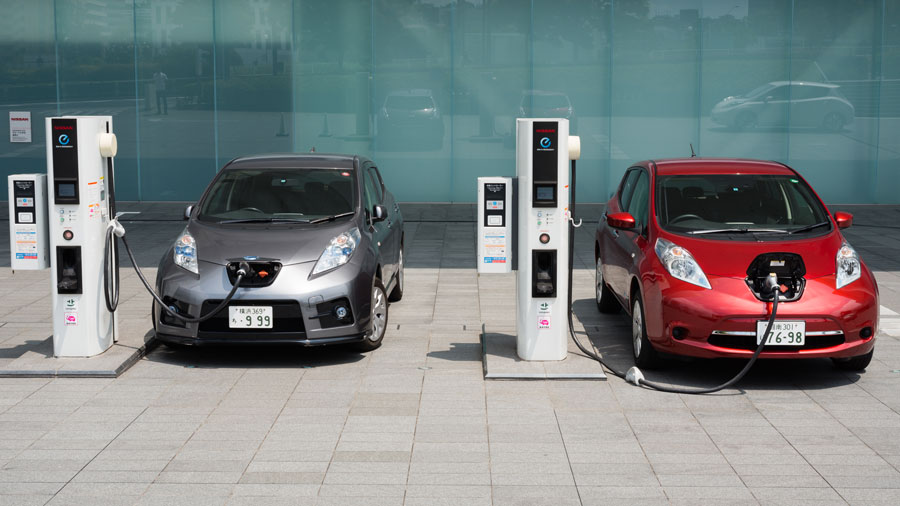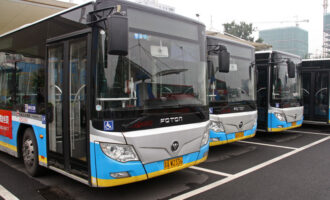
ADB: Lower grid carbon factor essential in achieving GHG reduction from electric vehicles
In 2015, 947 million passenger cars and 335 million commercial vehicles were active on roads around the world. Driven by a rapid vehicle increase forecast for developing countries in Asia, the number of cars is expected to double by 2040. Also in 2015, the transport sector emitted 7.5 billion tonnes of CO2, just under a quarter of global energy-related emissions.
Electric vehicles (EV) produce no direct or combustion emissions and are regularly touted as the silver bullet for reducing greenhouse gas (GHG) and urban air pollution concentrations. Certainly, transport electrification plays a vital role in facilitating the shift to a clean energy system, and many countries have implemented EV policies to encourage EV adoption.

The Clean Energy Ministerial (CEM) is a partnership of many of the world’s key economies with a view to accelerating the global energy transition. A recent campaign by the organisation, EV30@30, is looking to hasten the deployment of electric vehicles and targets a 30% sales share for EVs by 2030. Supporting governments include Canada, China, Finland, France, Japan, Mexico, the Netherlands, Norway, Sweden, the United Kingdom, and the second most populous country in the world, India.
The Transport Forum 2018, organized by the Asian Development Bank (ADB) in Manila, Philippines, from 12-14 September was dedicated to “Financing The Future of Transport in Asia and the Pacific.” Speaking in the Innovative Technology Plenary, Ki-Joon Kim, principal transport specialist, Transport Sector Group, Sustainable Development and Climate Change Department at the ADB, reported that based on an ADB study, countries like India will only achieve limited GHG reductions by deploying EVs due to their current high grid factor. Countries with a lower grid factor and low emission standard provide far greater opportunity, he says.
India, Indonesia, Kazakhstan, Mongolia and Turkmenistan are all Asian countries with a high carbon factor in electricity production. Kim confirms the GHG reduction potential from EV deployment is closely matched with the carbon grid factor. If the grid factor is below 0.8 kg CO2/kWh, then the country “can still benefit.” EVs exhibit lower emissions than comparable fossil fuel vehicles up to a grid factor of 1.2 kg CO2/kWh, says Kim. Armenia, Bhutan, Georgia, Kyrgyzstan, Laos, Tajikistan and Nepal have the potential to deliver significant emissions reductions from EV adoption, due to a high share of renewable electricity, he says.
I ndia has invested heavily in improving the availability of electricity. On April 28, Indian Prime Minister Narendra Modi announced the government had achieved its goal of providing every village in India access to electricity, a milestone which the International Energy Agency (IEA) hailed as “one of the greatest achievements in the history of energy.” Approximately half a billion people in India have gained access to electricity since 2000 and, according to the IEA, a political effort during the past five years has significantly accelerated this process. India’s acceleration in electricity demand has contributed heavily to a 3.1% increase in world electricity generation in 2017.
ndia has invested heavily in improving the availability of electricity. On April 28, Indian Prime Minister Narendra Modi announced the government had achieved its goal of providing every village in India access to electricity, a milestone which the International Energy Agency (IEA) hailed as “one of the greatest achievements in the history of energy.” Approximately half a billion people in India have gained access to electricity since 2000 and, according to the IEA, a political effort during the past five years has significantly accelerated this process. India’s acceleration in electricity demand has contributed heavily to a 3.1% increase in world electricity generation in 2017.
On the face of it, efforts to curb emissions such as electrification, efficiency improvements and biofuels appear to be having an impact. Global transport emissions grew by only 0.6% in 2017 (compared to 1.7% annually over the past decade).
The stock of EVs surpassed the three million mark in 2017, with a total of 1.1 million sales during the calendar year — a 54% increase from 2016. China accounts for 40% of the world’s electric cars, while Norway is streaks ahead of anyone in terms of market share, at 39.2%. Sweden is a distant second at 6.3% market share.
 However, it is important to recognise that despite growth in battery electric and plugin hybrid vehicles in recent years, the overall penetration of electric cars is still below 1% of the global car fleet. Kim attributes this relatively slow adoption to a continuing high purchase price of EVs, limited range on a single charge for larger vehicles, poor access to charging stations and lengthy charge times. Despite an increase in absolute numbers, “consistent and widespread policy and technical support is essential to maintain this growth in an optimum way,” he says.
However, it is important to recognise that despite growth in battery electric and plugin hybrid vehicles in recent years, the overall penetration of electric cars is still below 1% of the global car fleet. Kim attributes this relatively slow adoption to a continuing high purchase price of EVs, limited range on a single charge for larger vehicles, poor access to charging stations and lengthy charge times. Despite an increase in absolute numbers, “consistent and widespread policy and technical support is essential to maintain this growth in an optimum way,” he says.
To date, EV deployment has mostly been driven by policy. China and Norway have implemented the strongest policy push for EVs, so it is no surprise they’re the leaders in terms of volume and share. India too has implemented significant policies encouraging e-mobility, confirms Kim.
India recently announced a goal of 15% of vehicles on its roads to be electric in five years. India’s Transport Minister Nitin Gadkari confirmed this lofty ambition at a recent conference organized by the Society of Indian Automobile Manufacturers (SIAM) in New Delhi. Gadkari believes the 15% target can easily be achieved as demand for EVs is “huge” in India. However, unlike China, India is promoting EVs though non-fiscal incentives and believes direct subsidies are not a sustainable way of promoting EVs for the longer-term perspective.
 During his presentation, Kim offered a variety of recommendations to delegates to augment emissions reduction in Asia. Rather than a one-size-fits-all approach to policy, Kim suggested the highest impact will be achieved if governments focus on high mileage vehicles — trucks and buses, large fleets, and in major cities.
During his presentation, Kim offered a variety of recommendations to delegates to augment emissions reduction in Asia. Rather than a one-size-fits-all approach to policy, Kim suggested the highest impact will be achieved if governments focus on high mileage vehicles — trucks and buses, large fleets, and in major cities.
How green is the electricity grid In India, and how quickly will this improve? Decarbonising the grid is key in the rollout of EVs, reiterates Kim. Just buying EVs does not guarantee success in tackling this emissions challenge. He also called for tighter regulation around battery policy, further improvements in the design of vehicles, and greater availability of charging infrastructure.
A reduction in fossil fuel subsidies is necessary, and Kim proposes the creation of further incentive packages for EVs, such as subsidies and tax entitlements, alongside non-financial incentives — which could include new routes reserved for EVs or even preferential access to city centres.








